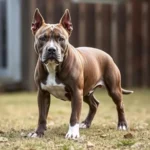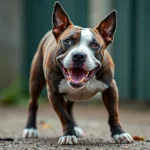
Potty training is a crucial part of bringing a new dog into your home, and for Dachshunds, it can present unique challenges. Their distinctive body structure—long backs and short legs—combined with their intelligent yet sometimes stubborn nature, makes the process a bit more complex. However, with the right knowledge and approach, you can successfully potty train your Dachshund, leading to improved hygiene, a stronger bond, and less stress for both you and your pet.
Understanding the Dachshund Breed
Characteristics of Dachshunds
Dachshunds, often affectionately referred to as “wiener dogs,” are small, elongated dogs that come in various coat types, including smooth, long-haired, and wire-haired. They typically weigh between 16 and 32 pounds and stand about 8 to 9 inches tall at the shoulder. Their curious and lively nature makes them delightful companions, but their intelligence can sometimes manifest as stubbornness.
Behaviorally, Dachshunds are known for their playful and energetic disposition. They are also fiercely loyal and can be quite protective of their owners. However, their strong-willed nature may require a bit more patience and persistence when it comes to potty training.
Potty Training Considerations for Dachshunds
When potty training a Dachshund, it’s essential to consider their unique physical attributes. Their long backs make them susceptible to certain health issues, such as intervertebral disc disease (IVDD), so it’s vital to avoid any strenuous activities during the training phase. Additionally, misconceptions exist about their potty training capabilities, leading to frustration for pet owners. Understanding these aspects can help set realistic expectations and improve your training strategy.
Preparing for Potty Training
Gathering Supplies
Before you embark on the potty training journey, gather essential supplies. These include:
- Potty pads: Useful for indoor training, especially in apartments or during inclement weather.
- Leash: A standard leash is critical for taking your Dachshund outside.
- Treats: High-value treats will motivate and reward your pup during training.
- Cleaning supplies: Enzyme-based cleaners are essential for accidents to remove odors and prevent repeat incidents.
Establishing a Routine
Consistency is key in potty training. Establishing a daily schedule for potty breaks can help your Dachshund understand when and where they should do their business. A suggested routine might include:
- Morning: First thing after waking up.
- After meals: Take your Dachshund out about 15-30 minutes after eating.
- After playtime: Exercise often stimulates the need to go.
- Before bed: A final potty break before settling in for the night.
Setting Up a Designated Potty Area
Choosing the right location for your Dachshund’s potty area is crucial. Look for a spot that is quiet, sheltered, and easily accessible. To make the area appealing, you can:
- Use familiar scents: If your Dachshund has previously pottied outside, take them back to that spot.
- Keep it clean: Regularly clean the area to make it inviting.
- Use positive reinforcement: Reward your Dachshund when they use the designated area.
The Potty Training Process
Step 1: Teaching Basic Commands
Teaching your Dachshund basic commands, particularly “go potty,” is vital. To do this effectively:
- Choose a command: Use a phrase like “go potty” consistently.
- Use the command during potty breaks: Say the command as you take them to their designated area.
- Reward success: When your Dachshund goes potty, immediately praise them and offer a treat.
Step 2: Creating a Potty Schedule
Understanding the potty needs of your Dachshund is essential. Generally, puppies require more frequent breaks compared to adult dogs. A helpful guideline is:
- Puppies (up to 6 months): Every 1-2 hours.
- Adult Dachshunds: Every 4-6 hours, depending on their behavior and dietary habits.
Additionally, watch for signs that indicate your Dachshund needs to go outside, such as sniffing around, circling, whining, or pacing.
Step 3: Positive Reinforcement Techniques
Positive reinforcement is one of the most effective training methods. This involves rewarding your Dachshund for desired behaviors rather than punishing them for mistakes. Some types of rewards include:
- Treats: Small, tasty treats can motivate your Dachshund.
- Praise: Use a happy tone and verbal praise immediately after they go potty.
- Playtime: Engaging them in a fun activity as a reward can reinforce good behavior.
Step 4: Handling Accidents
Accidents will happen, especially during the early stages of training. Understanding common reasons for these mishaps can help you address them:
- Overexcitement: Some Dachshunds may get overly excited or anxious and have accidents.
- Inconsistency: If the potty schedule isn’t followed, it can confuse your dog.
When an accident occurs, remain calm. Clean the area thoroughly with an enzyme-based cleaner to eliminate odors, which helps prevent future accidents. Avoid punishing your Dachshund, as this can create fear and anxiety around potty training.
Troubleshooting Common Problems
Stubbornness and Resistance
If your Dachshund is resistant to potty training, it’s essential to adjust your approach. Consider these tips:
- Shorten potty breaks: If your dog seems uninterested, try taking them out for shorter, more frequent breaks.
- Experiment with rewards: If certain treats don’t seem to motivate them, try different ones to find what excites them.
- Stay patient: Remember that consistency is key. It may take time for your Dachshund to catch on.
Regression in Training
Regression is not uncommon and can happen for various reasons, such as changes in routine or stress. To address this:
- Reassess the schedule: Ensure the potty schedule is being followed consistently.
- Evaluate changes in environment: New pets, moving, or shifts in family dynamics can stress your Dachshund. Provide comfort and reassurance during these times.
- Reintroduce the basics: Go back to the foundational training steps to reinforce the desired behaviors.
Environmental Factors
Changes within your household can significantly impact your dog’s potty training success. Consider these strategies to maintain consistency:
- Maintain routines: Keep the potty schedule, even during transitions.
- Provide a safe space: Create a calming environment for your Dachshund, especially if introducing a new pet or moving to a new home.
- Monitor behavior: Pay close attention to how your Dachshund reacts to changes and adjust your training methods accordingly.
Maintaining Long-term Success
Reinforcing Good Behavior
Once your Dachshund is successfully potty trained, it’s important to maintain that behavior. Ongoing reinforcement strategies include:
- Continued praise and treats: Even after they are trained, continue to reward them for using the designated area.
- Regular potty breaks: Stick to the routine established to reinforce their learning.
Transitioning Away from Pads
If you’ve been using potty pads, you might want to transition to outdoor potty habits. To do this effectively:
- Gradually move pads closer to the door: This helps your Dachshund associate the pads with going outside.
- Encourage outdoor potty habits: Use the command “go potty” when taking them outside.
- Reward outdoor success: Make sure to praise and reward when they go outside.
Regular Health Check-Ups
Regular veterinary visits are essential to rule out any medical issues that could affect your Dachshund’s potty habits. Signs that may indicate health problems include:
- Frequent accidents: More frequent accidents may suggest a urinary tract infection or other health concern.
- Changes in appetite: A sudden decrease or increase in appetite can signal underlying issues.
Conclusion
Successfully potty training a Dachshund requires understanding their unique characteristics, establishing a consistent routine, and employing positive reinforcement techniques. While challenges may arise, patience and persistence will ultimately lead to success. Remember to celebrate the small victories along the way, as they contribute to a stronger bond between you and your furry friend. With these strategies, you can make potty training a positive experience for both you and your Dachshund.









